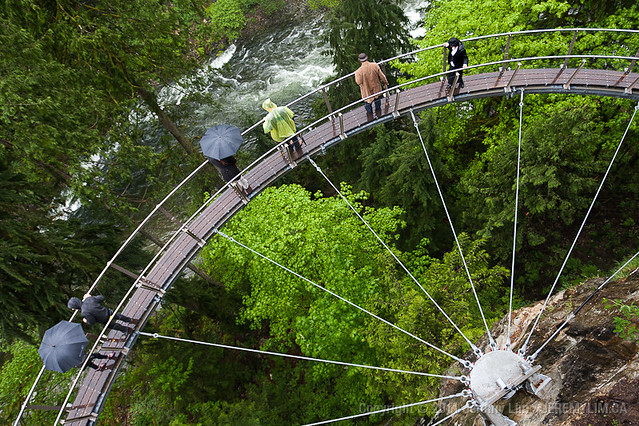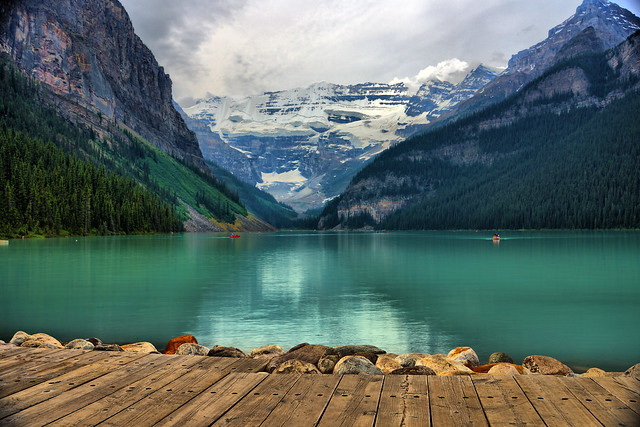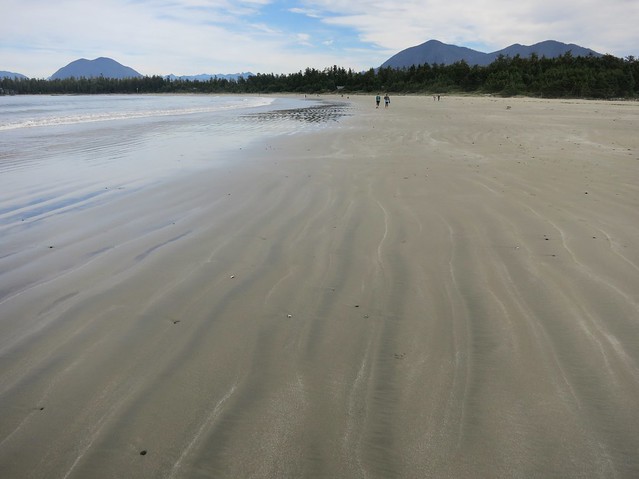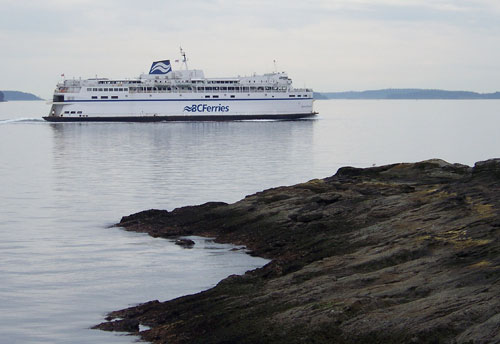
By Wilhelm Sievers (1860 – 1921) (Allgemeine Landeskunde: Amerika (1895-1897))
The Pacific coast is a land of mountains, gigantic trees, islands and deep-cut fjords. Every year salmon swam up the rivers to spawn, plenty of seals, otters and fish could be found close to shore, as well as shellfish of various kinds. Food was also abundant in the form of deer, bear, elk, and mountain goat. The climate is mild and wet.
In this environment the Coast Salish people lived. They made their houses out of the abundant cedar, as well as bowls and spoons and other useful items. They also carved out cedar logs to make canoes with which they not only navigated the inlets and rivers, but also went out to the open ocean hunting for whales. And all their wood-cutting and carving was done with simple tools made out of stone and shell!
From the resources around them, they spun cedar fibres into twine for fishing nets and lines, and wove baskets, hats and matts from the bark and roots of cedar trees. They also made their clothing and blankets from cedar bark and mountain goat wool and dog hair.
They are maybe best known for the totem poles they carved with figures that represented the legends of a tribe, adventures they had experienced, or special events or memories.
Some of these people were very wealthy and potlatches were held, where a chief would display how rich and generous he was by giving gifts to those he chose. However, there were also people who were merely slaves.
The coming of the Europeans drastically changed the culture and ways of the Coast Salish as it did across the rest North America. Sheep were introduced to Vancouver Island in the 1850’s providing a much easier source of wool and some of the native women were taught to knit by missionaries. Eventually, the native women in the Cowichan Valley began to knit sweaters with geometric designs or figures on them. They became popular and a means by which some families could put food on the table. The Cowichan sweater is still popular today.
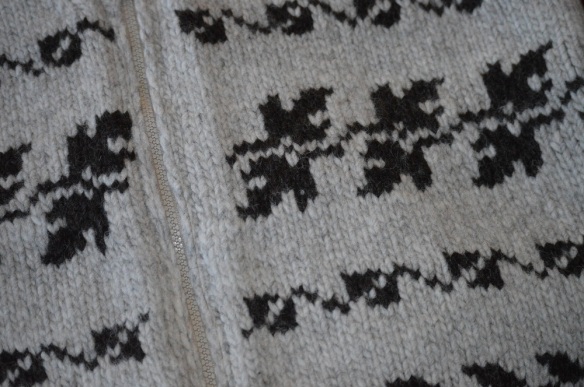 We are often not aware of the true cost of clothing when we buy items to wear, and the prices we pay do not always reflect the true value if everyone along the line of production was paid fairly.
We are often not aware of the true cost of clothing when we buy items to wear, and the prices we pay do not always reflect the true value if everyone along the line of production was paid fairly.
To make a sweater, the sheep has to be fed for a year while it grows it’s wool, it has to be sheared, and then the wool washed, combed, spun into yarn and then knit. What do you think a fair price would be for a hand-knit, 100% wool sweater that will last for years?
 If you can find it at your library, Yetsa’s Sweater by Sylvia Olsen is a lovely book to read about the making of a Cowichan sweater.
If you can find it at your library, Yetsa’s Sweater by Sylvia Olsen is a lovely book to read about the making of a Cowichan sweater.
Activity: Try learning how to knit. Here is a website that will instruct you in the basics: Imagination Soup
If you get really good at knitting, you may want to try knitting for a charity such as Knit-a-Square.

